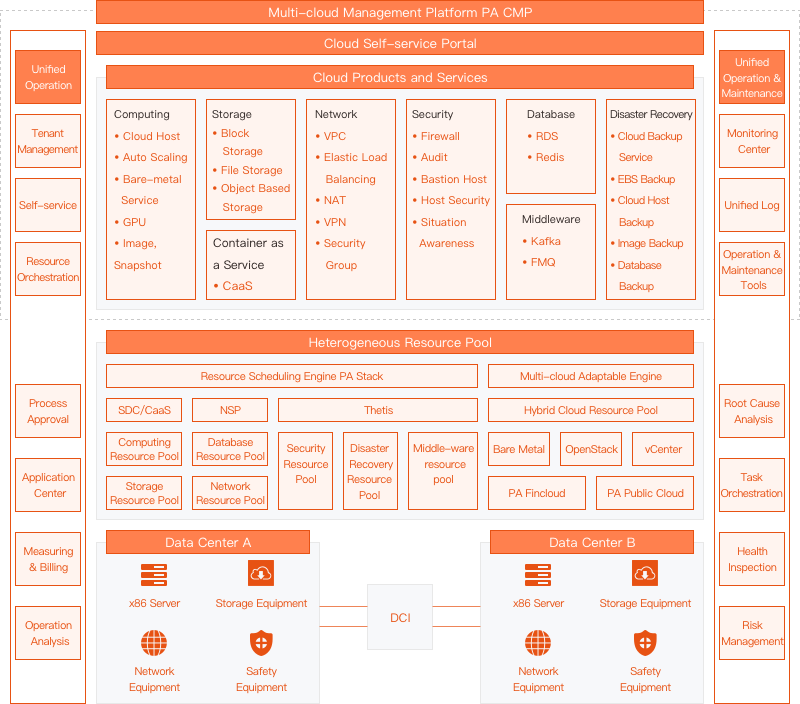Advantages
-
Visualized Configuration and ManagementEnable comprehensive monitoring of key components including CPU, memory, disk I/O, and network I/O, thus providing detailed data for rational resource planning.
-
Fast Business DeploymentSupport the rapid clone and system/file backup functions of virtual machines, improving the efficiency of business deployment.
-
Self-service cloud business e-flowAbstract physical resources such as computing, storage, and network into virtual resource pools provided on demand and in the form of service catalogs.
-
Multi-tenant Business SecurityUse functions such as VPC and network security group to ensure the security of users’ privacy information and data in a virtualized and multi-tenant environment.
-
High Availability and Disaster RecoveryThe storage resource pool adopts the distributed architecture, with the bottom layer using the three-copy technology and strong consistency verification, which ensures data integrity.
Solution Architecture

Solution Overview
- Take Private cloud management as the entry point, and focus on cloud service lifecycle management, cloud service operation, and cloud operation and maintenance, helping customers build integrated solutions for multi-cloud management and hybrid cloud management.
Architecture Advantages
- Multi-level Organization Operation: Customize organization levels and quotas and flexibly control the types of resources available to organizations by managing quotas and publishing service catalogs.
- Unified Operation: Support cloud service capability and custom service catalogs to provide enterprises with customized cloud services. Support multi-cloud unified management to meet the cross-cloud service demands of large enterprises.Support cost analysis and provide cost optimization suggestions.
- Intelligent Operation: Support unified management of resources and unified monitoring to meet the requirements of different monitoring views. Support space self-operation and maintenance, and provide a variety of monitoring and alarm means.
To address the five challenges facing by traditional data centers
-
Difficult to Expand Business
The underlying architecture is not elastic, and the underlying resources cannot flexibly provide corresponding dynamic resources for future business innovation or data growth.
-
Slow Business Deployment
The complex overall architecture and numerous types of equipment make it difficult for scheme design, integrated deployment, and business debugging, and lengthen the business launch cycle.
-
Complicated Operation and maintenance Management
Numerous types of equipment with different models make it impossible to centralize the monitoring and management of the infrastructure in the data center, which increases the cost of daily maintenance and management.
-
Low Resource Utilization
Businesses deployed in the servers of different data centers are built to the highest specifications, with resource utilization rate less than 15%, resulting in serious waste and high investment cost.
-
Innovation Inefficiency
In a traditional infrastructure environment, the IT department focuses on equipment installation, debugging, operation and maintenance, with no time left to innovation in the combination of IT and business.